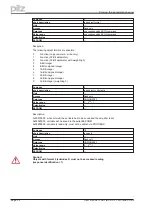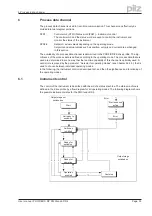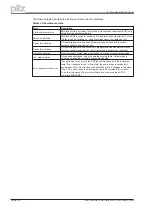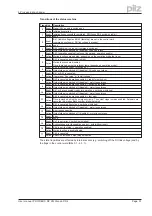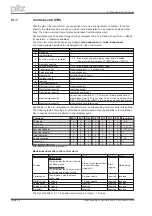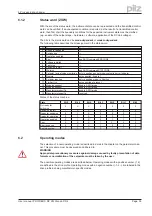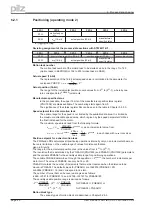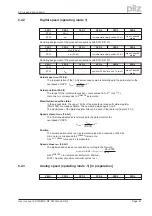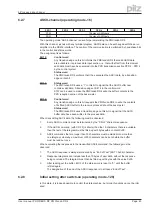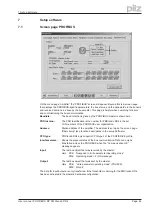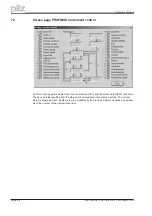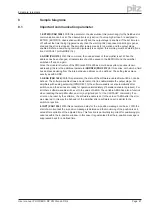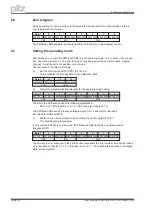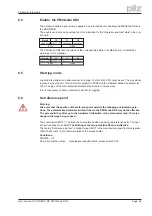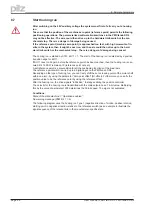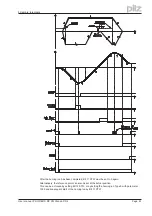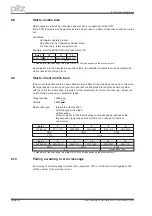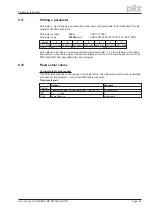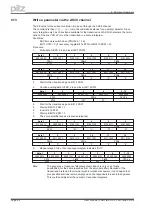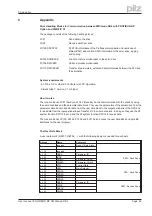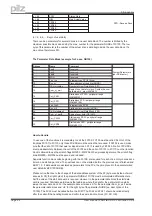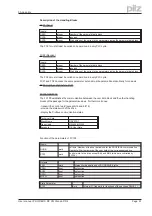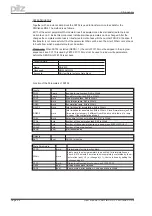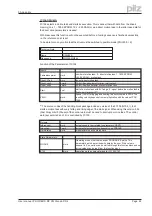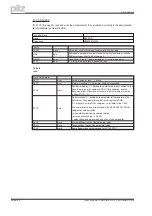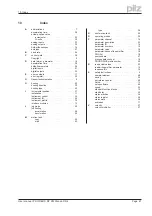
8.2
Zero telegram
At the beginning of communication via the parameter channel and after communication errors a
zero telegram should be sent:
Byte 1
2
3
4
5
6
7
8
0000 0000 0000 0000 0000 0000 0000 0000 0000 0000 0000 0000 0000 0000 0000 0000
PKE
IND
PWE
The PMCtendo DD4 answers, by likewise setting the first 8 byte of the telegram to zero.
8.3
Setting the operating mode
After switch-on or a reset the PMCtendo DD4 is in the operating mode -126, in which it cannot per-
form any motion functions. To be able to carry out positioning operations (motion tasks, jogging,
homing), it must be set to the position-control mode.
The procedure to do this is as follows:
a)
Set the control word Bit 10 (PZD1, Bit 10) to 0.
This invalidates the process data for the PMCtendo DD4.
Byte 9
10
11
12
xxxx x0xx
xxxx xxxx
xxxx xxxx
xxxx xxxx
STW
HSW
b)
Transmit a parameterization telegram for the operating mode setting.
Byte 1
2
3
4
5
6
7
8
0011 0011 1010 0010 xxxx xxxx
xxxx xxxx 0000 0000 0000 0000 0000 0000 0000 0010
PKE
IND
PWE
The bits in the PKE section have the following significance:
Bit 0 to 10 = PNU 930, Bit 12 to 15 = AK 3 (see also Chapter 4.1.1)
The PMCtendo DD4 sends a response telegram with AK = 2 and mirrors (identical)
the values for PNU and PWE.
c)
Switch on the new operating mode by setting the control word Bit 10 to 1.
This validates the process data.
If, for example, point a) is not observed, the PMCtendo DD4 transmits a negative answer:
(response ID=7)
Byte 1
2
3
4
5
6
7
8
0111 0011 1010 0010 0000 0000 0000 0000 0000 0000 0000 0000 0000 0000 0001 0001
PKE
IND
PWE
The number that is transferred in the PWE section represents the error number, and can be looked
up in the table in Chapter 4.1.1.2. In this case, error no. 17, “Task impossible because of operating
state” will be signaled.
Page 48
User manual PROFIBUS DP PMCtendo DD4
8 Sample telegrams

